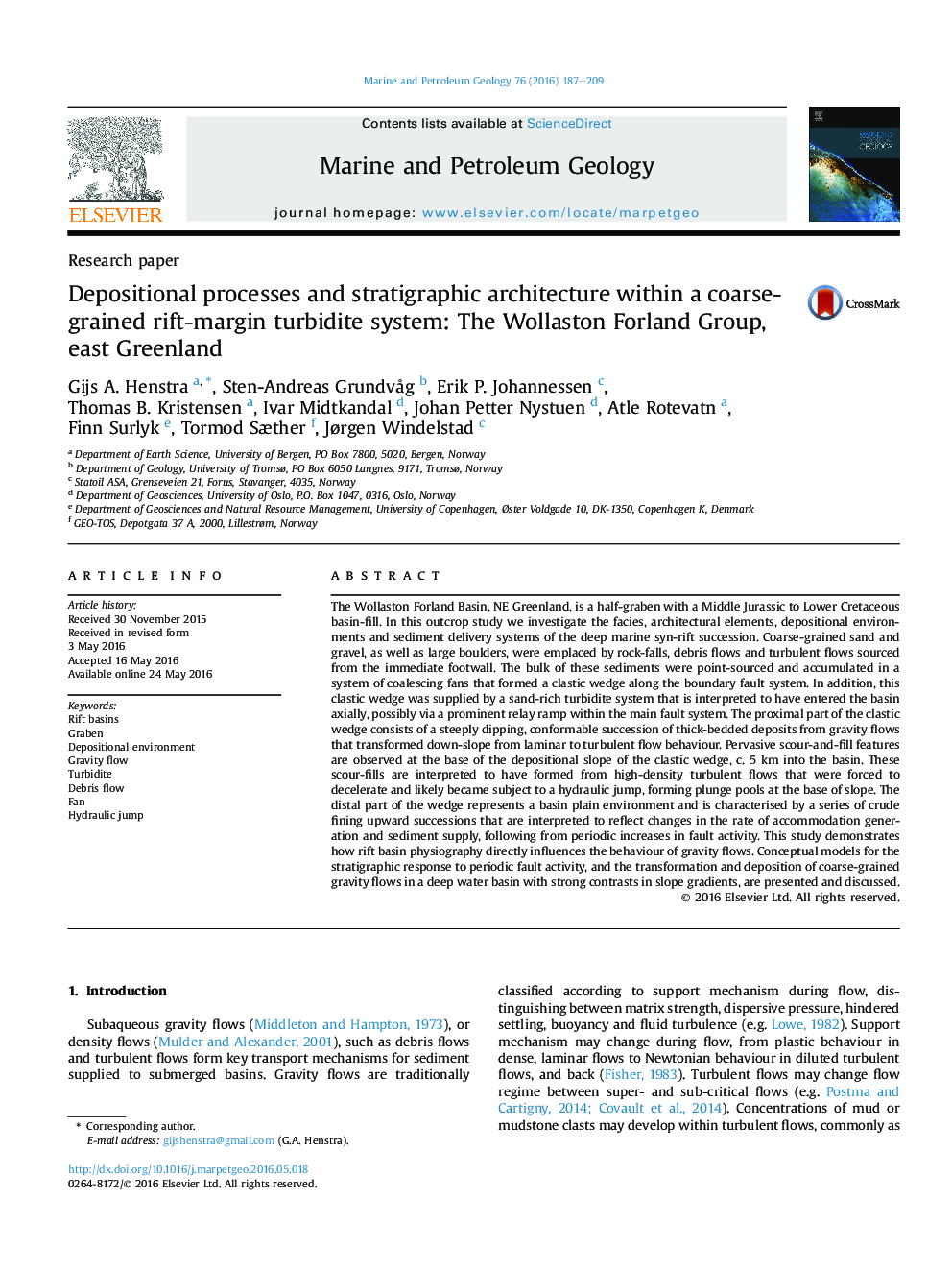| کد مقاله | کد نشریه | سال انتشار | مقاله انگلیسی | نسخه تمام متن |
|---|---|---|---|---|
| 6434727 | 1637151 | 2016 | 23 صفحه PDF | دانلود رایگان |
- We present an extensive collection of outcrop data from an ancient coarse-grained rift-margin turbidite system.
- The syn-rift succession consists of a spectrum of gravity flows deposits, frozen at different stages of flow transformation.
- We recognise the down-slope transformation of debris flows into turbulent flows and the development of plunge pools.
- The physiography of deep water rift basins exerts a strong control on the behaviour of individual gravity flow events.
- We discuss sediment delivery systems, stratigraphic response to fault activity and the transformation of gravity flows.
The Wollaston Forland Basin, NE Greenland, is a half-graben with a Middle Jurassic to Lower Cretaceous basin-fill. In this outcrop study we investigate the facies, architectural elements, depositional environments and sediment delivery systems of the deep marine syn-rift succession. Coarse-grained sand and gravel, as well as large boulders, were emplaced by rock-falls, debris flows and turbulent flows sourced from the immediate footwall. The bulk of these sediments were point-sourced and accumulated in a system of coalescing fans that formed a clastic wedge along the boundary fault system. In addition, this clastic wedge was supplied by a sand-rich turbidite system that is interpreted to have entered the basin axially, possibly via a prominent relay ramp within the main fault system. The proximal part of the clastic wedge consists of a steeply dipping, conformable succession of thick-bedded deposits from gravity flows that transformed down-slope from laminar to turbulent flow behaviour. Pervasive scour-and-fill features are observed at the base of the depositional slope of the clastic wedge, c. 5Â km into the basin. These scour-fills are interpreted to have formed from high-density turbulent flows that were forced to decelerate and likely became subject to a hydraulic jump, forming plunge pools at the base of slope. The distal part of the wedge represents a basin plain environment and is characterised by a series of crude fining upward successions that are interpreted to reflect changes in the rate of accommodation generation and sediment supply, following from periodic increases in fault activity. This study demonstrates how rift basin physiography directly influences the behaviour of gravity flows. Conceptual models for the stratigraphic response to periodic fault activity, and the transformation and deposition of coarse-grained gravity flows in a deep water basin with strong contrasts in slope gradients, are presented and discussed.
Journal: Marine and Petroleum Geology - Volume 76, September 2016, Pages 187-209
